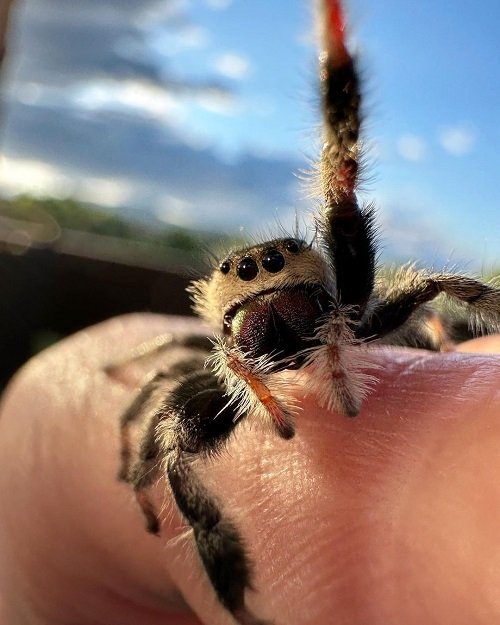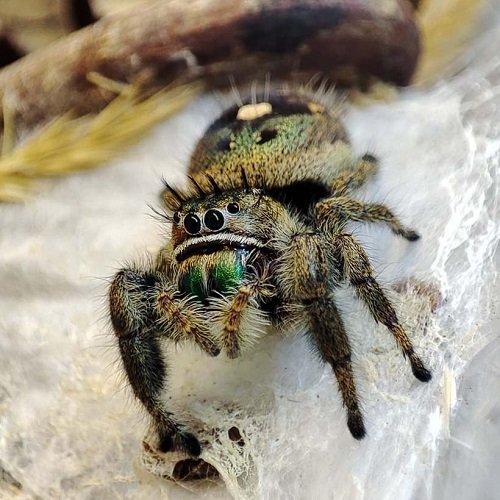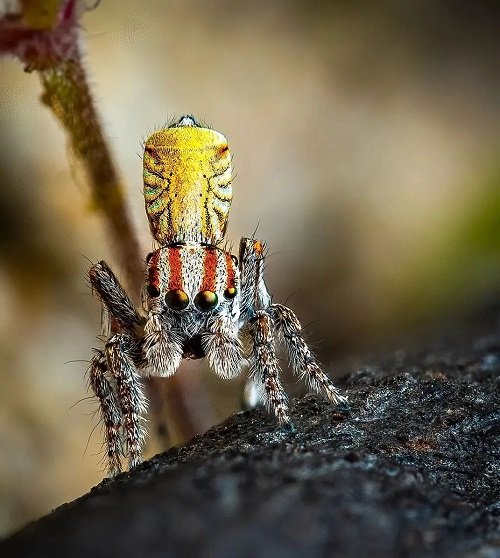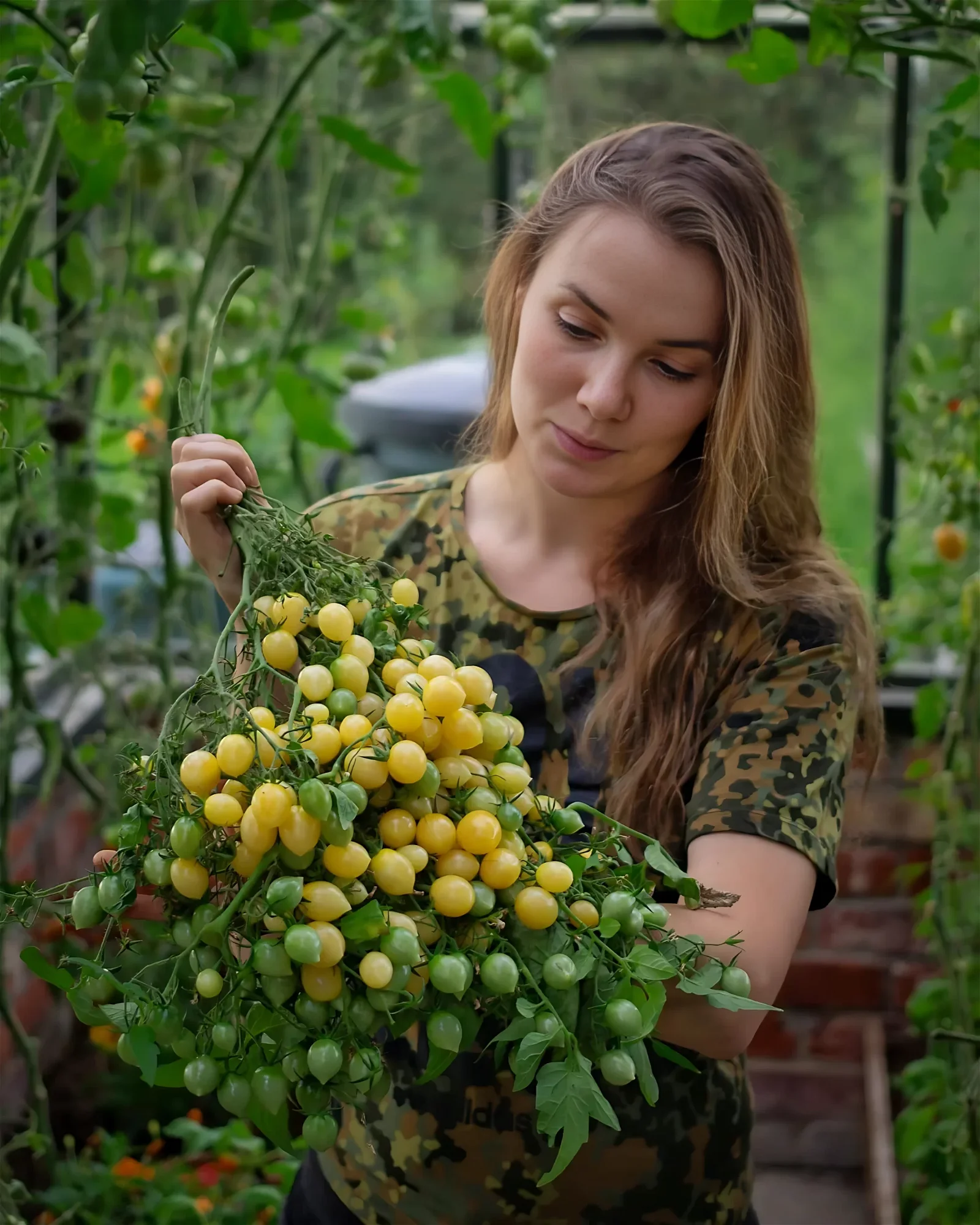Do you know about the Lifespan of Jumping Spider? If not, read here for all the necessary information about this creature!

If you don’t know what jumping spiders are, what is unique in them, what makes them different from other spiders, and other details, then you must read this article!
Read about the Banana Spider Facts
Jumping Spider Information

Jumping spiders are fascinating creatures belonging to the family Salticidae. They can be easily found in various habitats, such as wood piles or rocky areas. With over 5,000 identified species, each jumping spider exhibits distinct color patterns and behavior. Generally, jumping spiders are small and less than 15mm long.
They have unique features, including excellent vision with eight eyes (four on the face and four on the top of the head) and a stout body. Also, they are excellent jumpers and climbers. Additionally, these agile hunters actively stalk and leap on their prey during the day.
Also, the interesting fact about them is they do not construct webs like other spiders do. But they do make a sac-like silk for spending the night or hibernating. They are harmless to humans. However, some larger species can give a painful bite (not deadly) if not handled properly.
Lifespan of Jumping Spider

The Lifespan of a Jumping Spider can range from one and a half to three years. Johnson’s Jumping Spider, aka Red-Backed Jumping Spider, can live about one year.
Male jumping spiders usually live for around three months after maturity, whereas females can live a bit longer, up to a year. This fact highly depends on the individual jumping spiders, as some people have seen males living for a year and females dying earlier than usual.
Additionally, how long they live can be influenced by where they are located in the country, whether they are kept in captivity or the wild, and various other factors.
The oldest recorded jumping spider was a female kept in captivity. On average, jumping spiders live around six months to a year, varying depending on different factors.
Check out What Does It Mean When a Spider Crawls on You
Lifecycle of Jumping Spiders

Like many other spiders, the jumping spider has three main life stages. Let’s examine each stage below:
1. Egg
The first stage in the life of a jumping spider is the embryotic (egg stage). After the male and female mate, the female spider stores sperm and looks for a safe spot to lay her eggs. She places the eggs inside a special sac and fertilizes them.
2. What is an Egg Sac?
Female spiders use silk to make a protective bag called an egg sac to protect their eggs from other animals and bad weather.
One egg sac can contain 30-200 eggs. In summer, a female spider can lay up to six clutches.
Some spiders carry the sac with them until the eggs are ready to hatch, while others bury it in a safe place and leave it there until the right time. In some areas, spider eggs stay in the sac during winter and hatch in the spring. After a few weeks, the eggs start to hatch.
Read Praying Mantis Egg Sac Information and Details
3. Spiderlings
After hatching from their eggs, spiders enter their next stage, called “spiderlings.” Spiderlings are baby spiders that have just come out of the egg sac and are usually smaller than a tic-tac.
Some spiderlings can walk out of the sac independently, while others use silk to create a balloon-like structure that carries them away with the wind to their new home. This process is called “ballooning.”
During the spiderling phase, they grow by shedding their outer skin, a process called molting. They will molt around five to six times until they become adult spiders with their fully developed exoskeletons.
4. Adult Spider
Once the spiderlings have molted several times and grown their full exoskeletons, they become adult jumping spiders. At this stage, they are ready to reproduce, so they start searching for a mate, and then the same cycle continues.
Though female jumping spiders are not highly involved in raising their young, their longer lifespans allow them to assist in upbringing their spiderlings.
Factors that Might Shorten A Jumping Spider Lifespan?

1. Diseases
Jumping spiders can get sick, which can make their lives shorter. There are reports of tiny spider mites spreading diseases to jumping spiders, making them ill and not living as long.
Sometimes, jumping spiders can also get infected with worms, killing them or reducing their lifespan.
2. Predators
Jumping spiders are good at catching pests, but they also have enemies that like to eat them. These enemies include wasps, hornets, larger spiders, lizards, and geckos.
Sometimes, even birds can be a threat to them. If a jumping spider lives in an area with many of these potential enemies, it’s more likely to be eaten before it can live its full life.
3. Captivity vs. Wild
Jumping spiders kept as pets or in captivity, like in a zoo, usually live longer than those in the wild. This is because, in captivity, they don’t have to search for food or water and are kept in comfortable environments with the right temperature and conditions.
Also, they don’t have to be afraid of predators, so they can live safer and longer lives!
4. Human Interference
Human activities, such as habitat destruction, pesticide use, or unintentional harm, can negatively impact jumping spider populations. This interference can disrupt their natural habitats, limit their food sources, or directly harm the spiders.
5. Lack of Food
Jumping spiders are active hunters and require a steady supply of insects and other small prey for sustenance. If they cannot find enough food in their environment, it can lead to malnutrition and a shortened lifespan.
6. Harsh Weather Conditions
Extreme weather conditions, such as prolonged droughts, floods, or severe cold, can harm jumping spiders. They are small and vulnerable to harsh environmental changes, which may result in decreased survival rates and shorter lives.


